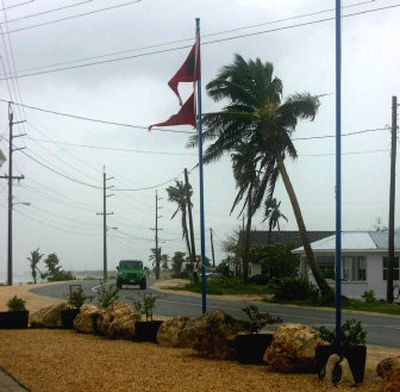Wilma growing stronger, becomes Category 4 storm

SAN PEDRO SULA, Honduras – Hurricane Wilma whirled into the record books as the 12th such storm of the season, strengthening early today into a Category 4 storm and setting a course to sideswipe Central America and Mexico. Forecasters warned of a “significant threat” to Florida by the weekend.
Wilma grew into a dangerous Category 4 hurricane with maximum sustained winds of 150 mph. It was only Tuesday morning that Wilma grew from a tropical storm into a weak hurricane, with 80 mph winds.
The storm could become a Category 5 sometime today, the National Hurricane Center in Miami said.
Forecasters warned that Wilma was likely to rake Honduras and the Cayman Islands before turning toward the narrow Yucatan Channel between Cuba and Mexico’s Cancun region – then move into the storm-weary Gulf.
The hurricane’s outer bands brought rain, high winds and heavy surf to the Atlantic coasts of Nicaragua and Honduras, which closed two seaports on its Caribbean coast.
Early today, the hurricane was centered about 175 miles southwest of Grand Cayman Island and about 400 miles southeast of Cozumel, Mexico.
“It does look like it poses a significant threat to Florida by the weekend. Of course, these are four- and five-day forecasts, so things can change,” said Dan Brown, a meteorologist at the U.S. National Hurricane Center.
Wilma already had been blamed for one death in Jamaica as a tropical depression Sunday. It has flooded several low-lying communities and triggered mudslides that blocked roads and damaged several homes.
While some Florida residents started preparing by buying water and other supplies, hurricane shutters hadn’t gone up yet in Punta Gorda, on Florida’s Gulf coast, and no long lines formed for gas.